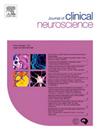Characterization and treatment patterns of patients treated with immediate-release sodium oxybate for narcolepsy: A propensity score–matched cohort study
IF 1.9
4区 医学
Q3 CLINICAL NEUROLOGY
引用次数: 0
Abstract
Background
Sodium oxybate (SXB) is strongly recommended for narcolepsy treatment. Comorbidities and treatment patterns of patients with narcolepsy treated vs not treated with SXB are unknown.
Methods
An electronic health record-based search identified first-time Mayo Clinic patients with ≥ 1 narcolepsy-specific International Classification of Diseases 9th/10th Revision code and ≥ 1 diagnostic mention of narcolepsy in clinical notes (1975–2020). Common comorbidities were compared between age/sex matched cohorts with and without SXB treatment using odds ratios. Reasons for SXB therapy not being continued or taken as directed were identified using manual chart review.
Results
Of the 4387 patients with narcolepsy identified, 8 % (n = 351) received SXB treatment and 92 % (n = 4036) did not. The most common comorbidities (>20 % overall population) were insomnia, fatigue, depression, hypertension, hyperlipidemia, obstructive sleep apnea, diabetes mellitus, arrhythmia, and idiopathic hypersomnia. In the cohorts of 351 matched patients, no significant differences between cohorts were observed for any comorbidity at any time point (overall, 5 years before or after diagnosis). Among patients who received SXB, 113 had clinical notes indicating discontinuation of SXB, with a reason documented for 71 (most common: lack of efficacy [n = 11]). Of the 24 recorded reasons for patients missing the second nightly SXB dose, the most frequent was the inability to wake up, with consequences noted the next day of increased symptoms.
Conclusions
No significant differences in comorbidities were observed between cohorts. Although SXB is a highly effective treatment for narcolepsy, this study highlights challenges patients face while taking twice-nightly SXB, which may result in underuse/misuse and suboptimal treatment.
求助全文
约1分钟内获得全文
求助全文
来源期刊

Journal of Clinical Neuroscience
医学-临床神经学
CiteScore
4.50
自引率
0.00%
发文量
402
审稿时长
40 days
期刊介绍:
This International journal, Journal of Clinical Neuroscience, publishes articles on clinical neurosurgery and neurology and the related neurosciences such as neuro-pathology, neuro-radiology, neuro-ophthalmology and neuro-physiology.
The journal has a broad International perspective, and emphasises the advances occurring in Asia, the Pacific Rim region, Europe and North America. The Journal acts as a focus for publication of major clinical and laboratory research, as well as publishing solicited manuscripts on specific subjects from experts, case reports and other information of interest to clinicians working in the clinical neurosciences.
 求助内容:
求助内容: 应助结果提醒方式:
应助结果提醒方式:


